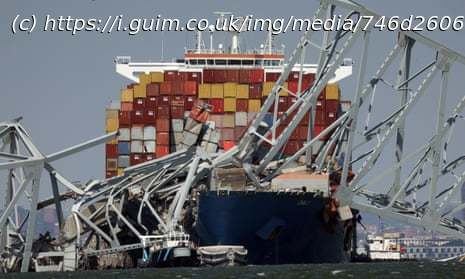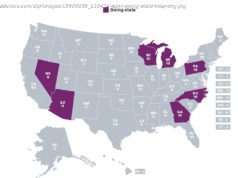Responders have currently found ‘no immediate threat’, but 14 of at least 56 containers carrying contaminants were destroyed
As authorities clean up the wreckage left behind by Tuesday’s deadly collapse of Baltimore’s Francis Scott Key Bridge, they are also looking for signs of potential environmental contamination.
Responders have currently found “no immediate threat to the environment”. But for environmental experts, concerns still loom.
“We definitely hope that it comes true that there’s no risk to the public,” said Jennifer Kunze, the Maryland organizing director for conservation group Clean Water Action. “But we can never take anything for granted, and it’s too early for everything to be analyzed and for me to say anything for sure.”
The massive container vessel that struck the bridge on its way out of the Baltimore harbor was carrying at least 56 containers of hazardous material, collectively containing 764 tons of corrosives, flammables and other contaminants, the National Transportation Safety Board (NTSB) said on Thursday.
Fourteen of those containers were destroyed during the crash, officials said, but they detected no immediate cause for concern – at least not yet.
“As far as we know there is no immediate threat to the environment,” a partnership among the federal and state agencies and emergency management consultants responding to the bridge collapse – known as a unified command – wrote in an email.
So far, it seems Baltimore may have averted a number of worst-case scenarios, said Gary Belan, a senior director at the national conservation organization American Rivers. For one, the 14 destroyed containers were primarily full of essential oils, soaps and perfumes.
Home
United States
USA — mix As Baltimore bridge cleanup begins, fear of environmental contamination looms






